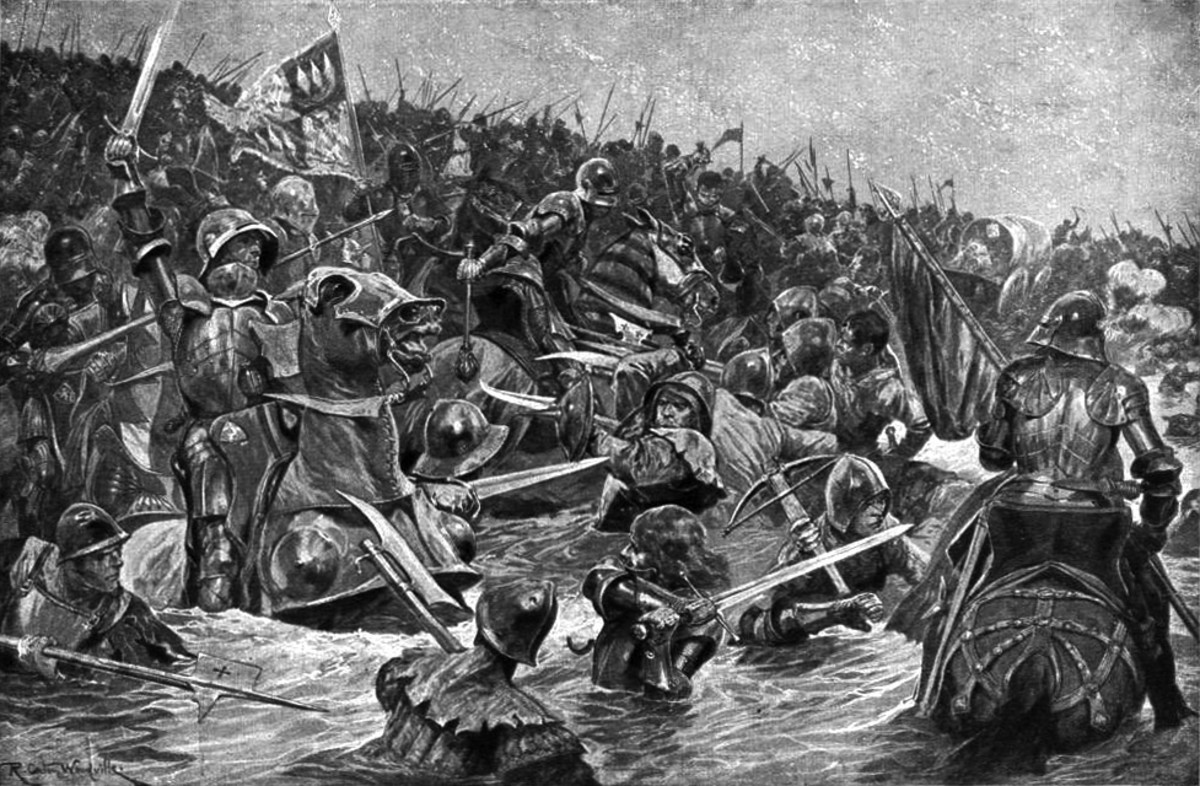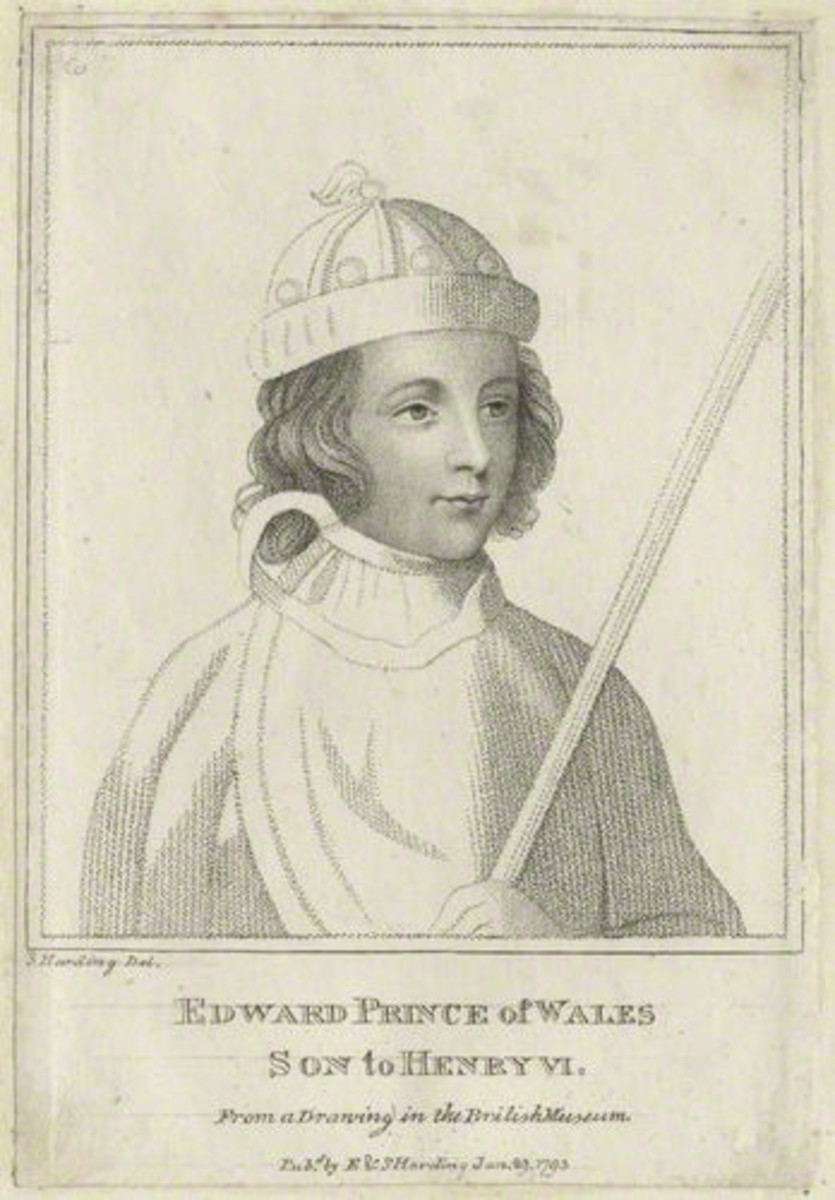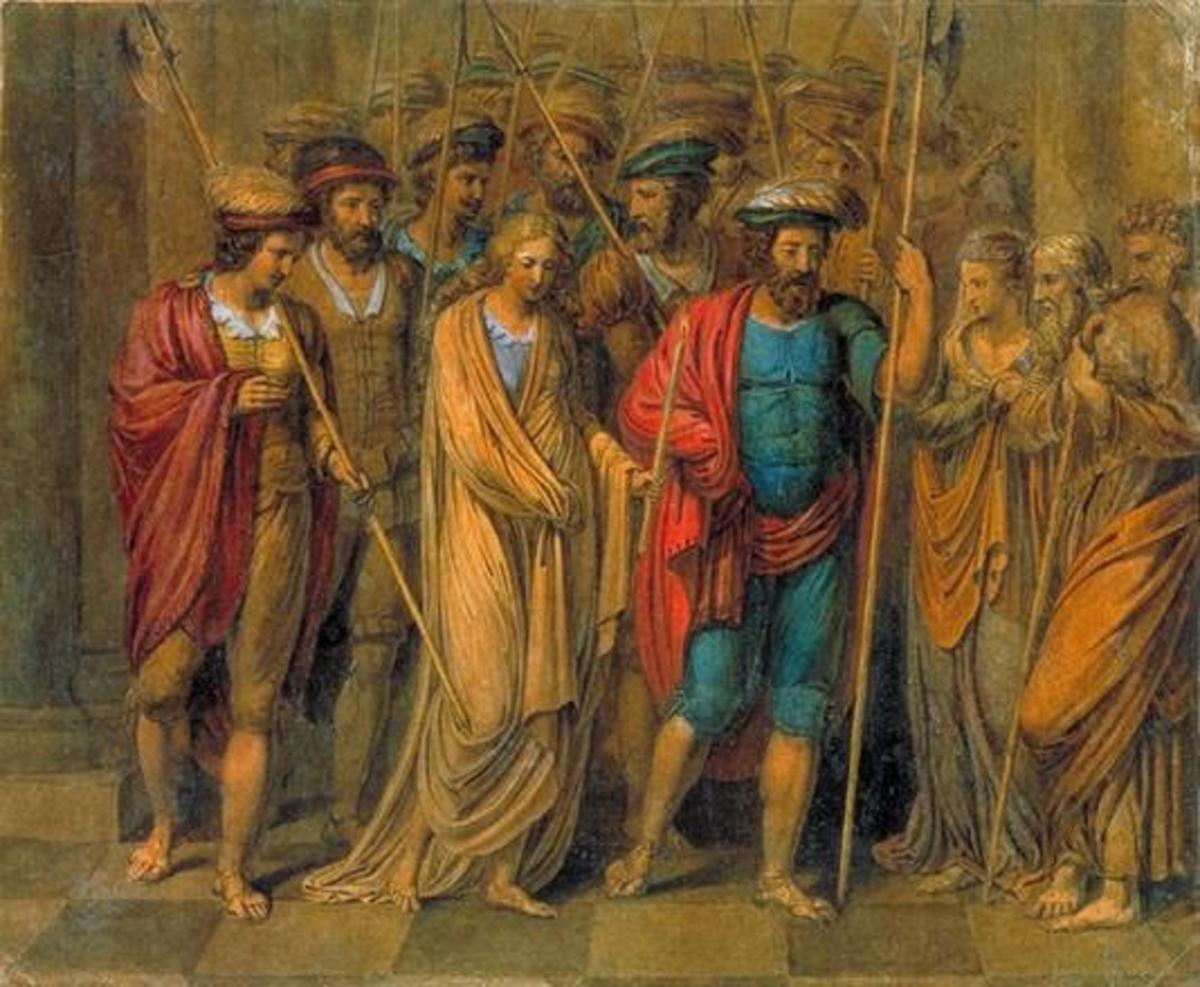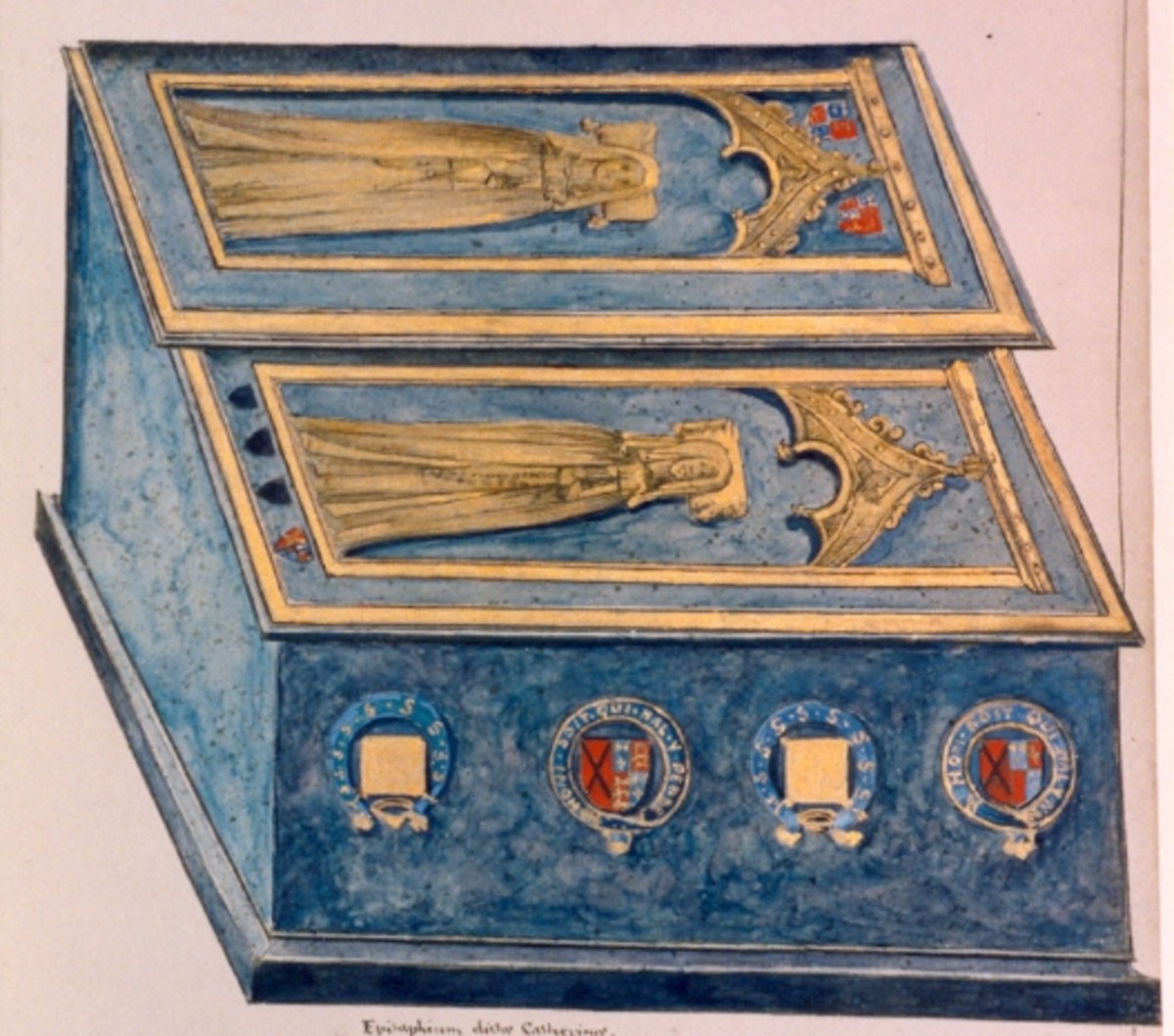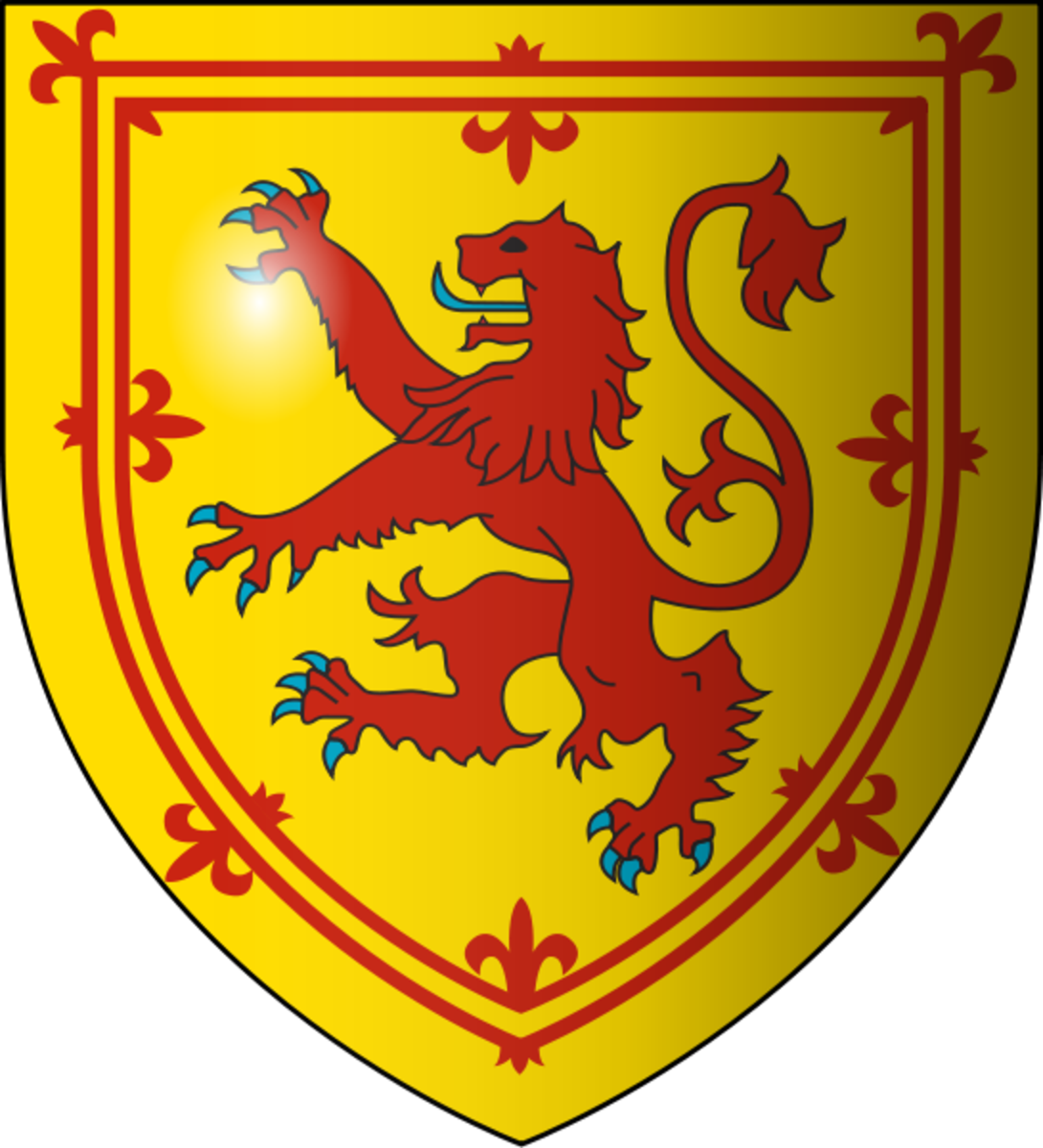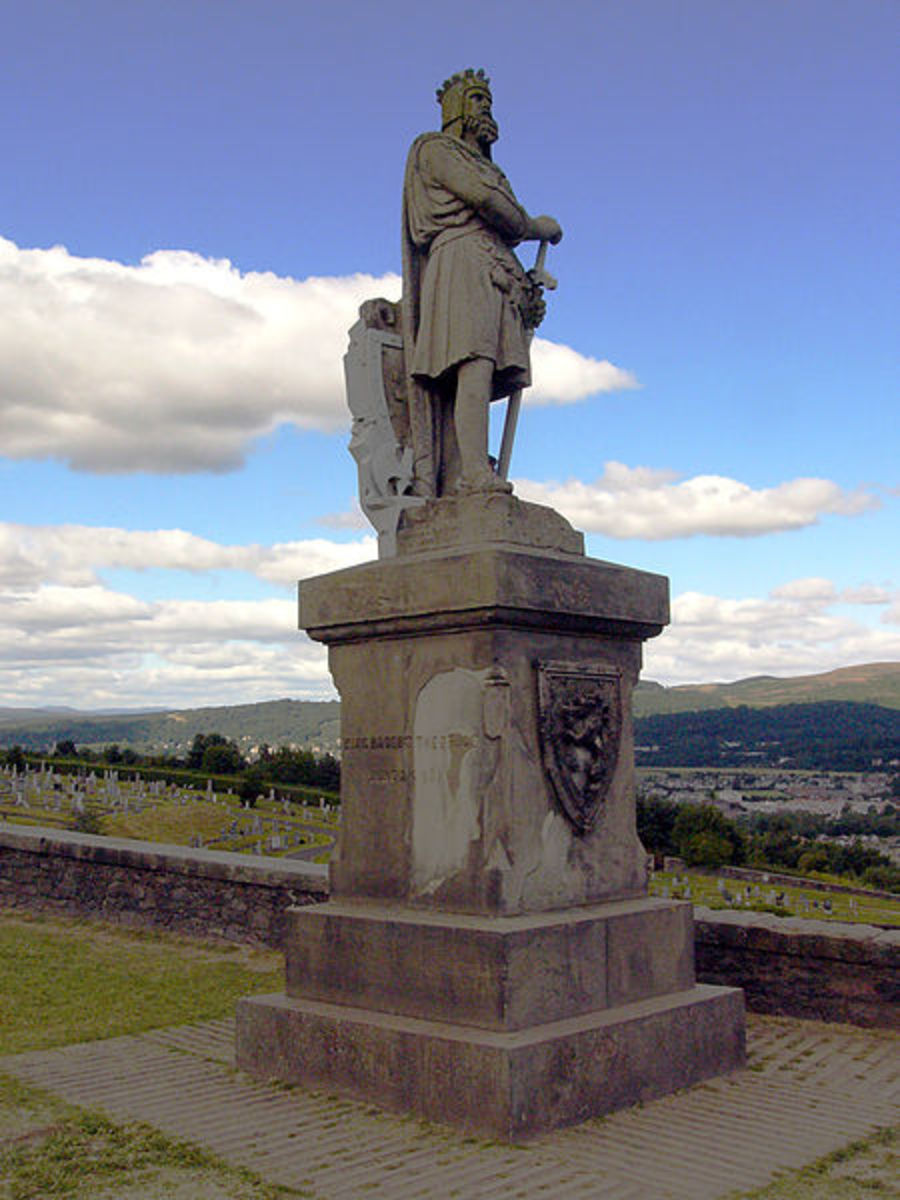Edward IV Succeeds the Throne the First Time: Winning the Battle of Towton

On March 4, 1461 Edward IV ascended to the throne for the first time. It was after his win at the Battle of Towton against the Lancastrian army and ended the 62 year reign of Lancastrian kings (all Henrys!) However, this reign didn’t initially end with his death. It lasted for just short of 10 years when Henry VI came back to defeat him. Six months after that he was back on the throne and remained there until April 9, 1483 when he died.
The first 10 years of his reign involved his marriage and birth of his first three children. It also involved the desertion of the man who helped him become King of England, Richard Neville, Earl of Warwick.
The Battle of Towton: The Defeat of the Lancastrian Army
As the eldest son of Richard Plantagenet, Duke of York, Edward had a strong claim to the throne. Richard had a link to Edward III of England through both his mother and father. His mother was the great-great-granddaughter while his father was the grandson of the king. However, Henry VI also had a good claim to the throne. His father was the grandson of Edward III and they had continued a male lineage to get to this point.
It didn’t stop Richard from wanting his son on the throne. The Battle of St. Albans was the official start to the Wars of the Roses, but Richard would never get to see his son on the throne. He died on December 30, 1460 along with his second son at the Battle of Wakefield. The good thing for the Plantagenet army was that Henry VI had already been captured at the Battle of Northampton back in July.
18-year-old Edward was left fighting for the crown with the help of his cousin, Richard Neville, also known as The Kingmaker. They started with a number of smaller battles, including one at Mortimer’s Cross at the start of February 1461. The Yorkist army was able to make their way to London, with Edward and Richard at the front. Henry VI’s wife, Margaret of Anjou, led her army to the Midlands to help with the battles there. It meant that the capital was easier to take.
The Yorkist army took the capital on February 26, 1461, but it was at a price. A few days beforehand, the Lancastrians gained their king back at the Second Battle of St. Albans. Despite being just 22 miles away from the capital, they decided not to reclaim it. The people of England viewed that as a weakness and a sign that they had given up the claim to the throne. Edward IV was proclaimed King of England.
The reign was secured by the Battle of Towton on March 29, 1461, which would prove to be the bloodiest battles.
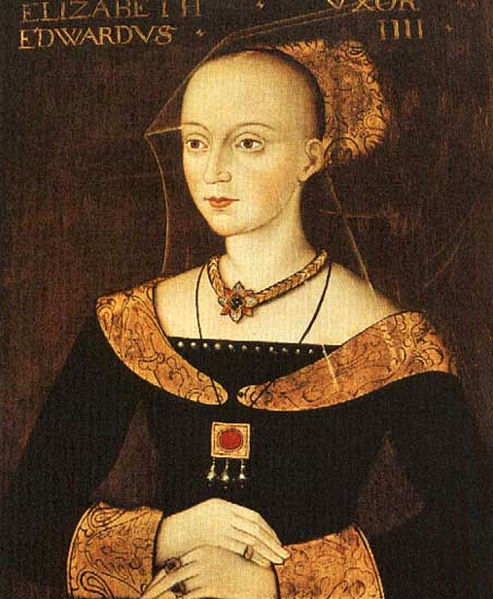
The Politics of Being King: Edward IV’s Secret Marriage to Elizabeth Woodville
Now at 19-years-old, Edward found himself being thrown into the world of politics as King of England. For many 19-year-olds now, having this type of power could seem daunting and overwhelming, but the young king took it in his stride. It had been something he had been fighting for over the last five years, and something his father and brother had lost their lives for.
However, Warwick viewed the king’s young age as advantageous for him. He believed that he could now reign through the king, and started off by trying to arrange a powerful alliance through marriage. One of the most powerful alliances was with Anne of France, Louis XI’s daughter. But Edward had his eyes on another woman: Elizabeth Woodville.
There are many rumors and stories surrounding the romance of Edward and Elizabeth. One of those includes Elizabeth holding a dagger to her own throat saying that she would rather die than become his mistress. By this point, Edward had been known for his many mistresses but Elizabeth didn’t want to sully her name. Apparently proving it in this way made Edward fall in love with her and he asked her to marry him.
Whatever the truth behind the many stories, the two did marry in secret. May Day 1464 is given as the day of their wedding, but nobody knows for certain. It is believed that only Elizabeth’s mother, Jacquetta of Luxemburg, attended the wedding. It wasn’t until October of that year that Elizabeth was presented at court as Edward’s lawful wife.
The marriage pushed Warwick and his supporters out. The Woodvilles moved in with 12 unmarried siblings of Elizabeth and married the majority of the noble families in England. They were a threat to many, and had to be stopped.
Richard Neville, Earl of Warwick, Changes Sides
Warwick felt that he had no option and switched sides. He didn’t quite join the Lancastrian side, but he did work to overthrow Edward IV. He went to his Yorkshire residences and focused on putting Edward’s younger brother, George, on the throne. It seemed to work at first, too. Edward was captured at Olney after his army was defeated on July 26, 1469 at the Battle of Edgecote. Warwick tried to rule in Edward’s name, but the nobility resisted him. Less than two months later Edward was released.
Edward chose to act with mercy and wanted to reconcile with his brother and cousin. However, in March the next year, the two chose to rebel and joined the Lincolnshire Rebellion. When that was defeated, they left for France. It was time to truly switch sides and join Margaret of Anjou. Warwick agreed to restore the Lancastrian king to the throne, with the help of Margaret and the French King, Louis XI.
Documentary of the Mass Grave Found from the Battle of Towton
The Ancestors through Elizabeth of York
Children of Edward IV During His First Reign
During his first reign, Edward had three daughters. The first was the most important for England, Elizabeth of York. She would go on to marry Henry Tudor, the first Tudor King, and is the most recent link for all ruling monarchs since her reign. It wasn’t an easy life for her, but she made the most of everything she had.
Mary of York was the second daughter, born August 11, 1467. Very little is known about her, except a few marriage talks. She was just 14-years-old when she died. She was buried at Windsor Castle in St. George’s Chapel, but her tomb was mistakenly labelled in 1789. During restoration work, workmen found lead tombs with Edward IV and Elizabeth Woodville. Believe that one of those was Mary and the other was her youngest brother, George, who died when he was two, the inscriptions were made. It was between 1810 and 1813 that the mistake was noticed when a coffin with her name was discovered, along with one belonging to George. The tombs of the other two bodies in Edward IV’s tomb are still unknown, but speculations are that they are the Princes in the Tower.
The third daughter was Cecily of York, born a year and a half before her father lost the throne the first time. Interestingly, she was betrothed to James IV of Scotland, but the marriage proved to be unpopular with the Scottish people. James’ father, James III, broke the betrothal. James IV ended up married to Cecily’s niece, Margaret Tudor. Cecily had many honors as the sister of the queen consort, including carrying her nephew, Arthur, into his christening and carrying Catherine of Aragon’s train during her first marriage to that same nephew.
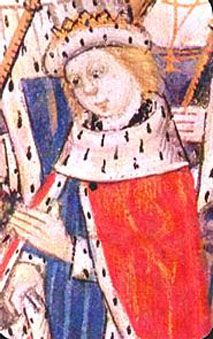
Edward IV Flees to Holland
The army was too much for Edward’s, and he and his youngest brother Richard fled the country. He was forced into exile, while his wife and three daughters were forced into sanctuary to protect themselves. Elizabeth was heavily pregnant at the time and gave birth of Edward, the future Edward V, while in sanctuary.
Edward only remained in exile for six months. He had been on the throne for a decade, and was still young enough to fight for that crown back. He gathered his army and made sure he got to see his son. It would be the Battle of Tewksbury on April 11, 1471 that would see the 29-year-old king back on the throne until the end of his life almost 12 years later.



